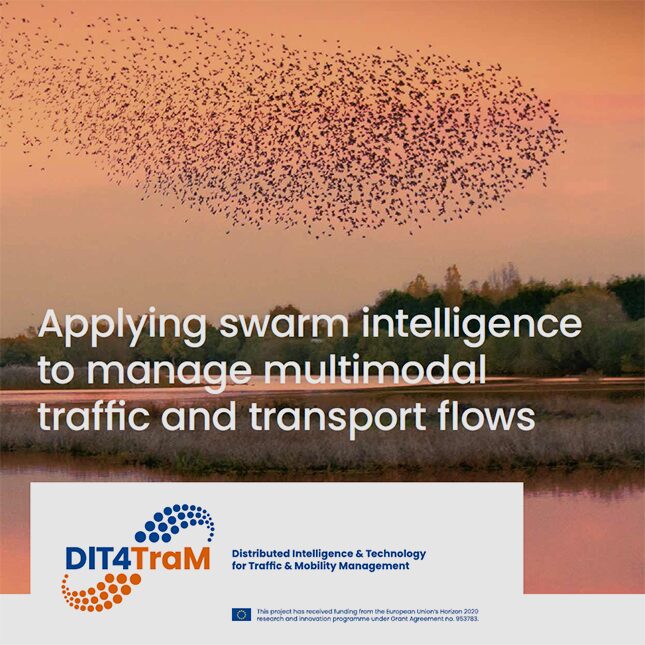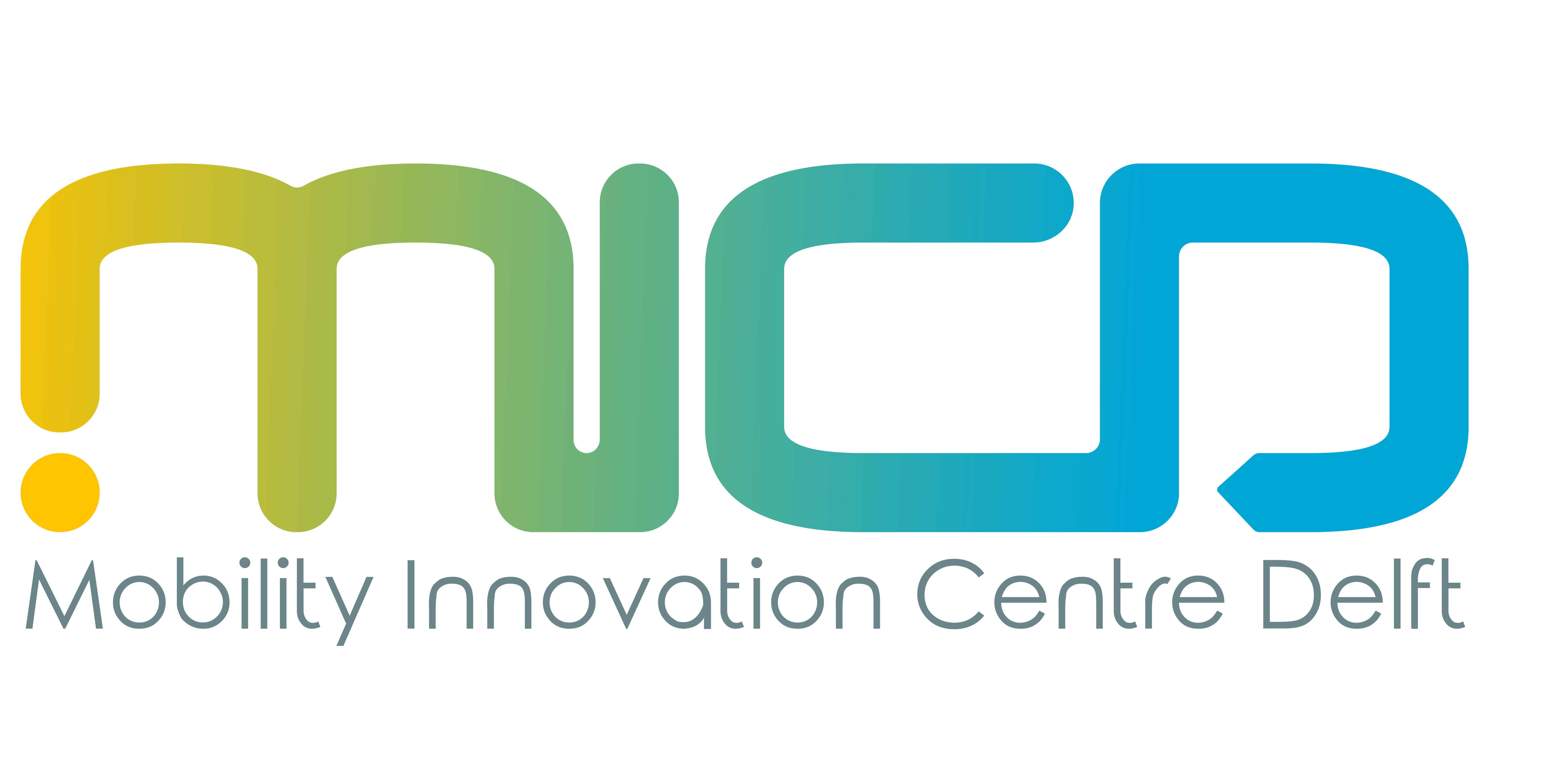Our mobility ecosystem is becoming increasingly complex, especially in urban areas. This makes it virtually impossible to manage traffic in the traditional centralized way. Is another approach conceivable? The goal of DIT4TraM is to apply swarm intelligence to manage traffic and mobility. MICD coordinates this EU funded project and is responsible for the six DIT4TraM pilots.
Duration
From September 2021 to September 2024Partners (TU Delft)
Transport & Planning, faculty of Civil Engineering and GeosciencesPartners (other)
Please see below.
It’s a fascinating spectacle—tens of thousands of starlings that form beautiful moving patterns in the air. Their aim is to scare off their natural enemies, biologists explain. The great thing is that they succeed in doing so without any direction or guidance from above. How do they do that? The swarm creates harmonious patterns because all birds individually follow a small set of local rules. These rules are remarkably simple, like ‘keep enough distance from the neighbors, but not too much.’
Traffic participants also have a common interest, namely a smooth and safe flow of traffic. To achieve these goals, road authorities use centralized traffic and mobility management to control and correct the traffic flows. But our mobility ecosystem has become so complex over the years that controlling traffic ‘from above’ is no longer tenable. Can we learn from the starlings and start regulating locally and bottom-up?
In the DIT4TraM project, Distributed Intelligence and Technology for Traffic and Mobility Management, twenty knowledge institutions, companies and governments are investigating and testing for the first time whether this ‘swarm intelligence’ approach is feasible for traffic and transport.
Applications
DIT4TraM’s goal is to develop control concepts and algorithms based on swarm intelligence for the widest possible range of applications. The partners focus on different modalities and different use cases, from local traffic control to regional traffic and mobility management. They are, of course, looking at fully decentralized solutions with one hundred percent self-organization. But they also include solutions with distributed intelligence: solutions that are local where possible and centralized where necessary. In this case, central intelligence, such as a traffic management system at the traffic center, monitors the situation in general and only interferes if the local intelligence falls short.
Six pilots
To test and develop all new knowledge and insights in practice, six pilot studies in four EU countries are organized: in France (Bordeaux), Greece (Glyfada and Athens), the Netherlands (Amsterdam and Utrecht), and Spain (AP-7 freeway). With these pilots we test the gains to be achieved for traffic flow, safety and liveability and look at the effects on reliability and resilience.
Partners
AMS, Bar Ilan University, EPFL, ETH Zürich, National Technical University Of Athens, Université Gustave Eiffel, Aimsun, Arane Adviseurs, DEIA, Gertrude, NeoGLS, NeoGLS, Siemens Mobility, Technolution, Amsterdam, Bordeaux Métropole, Glyfada Municipality, Polis, Utrecht

Brochure
Read more about the DIT4TraM project on their website or download their brochure (pdf).
